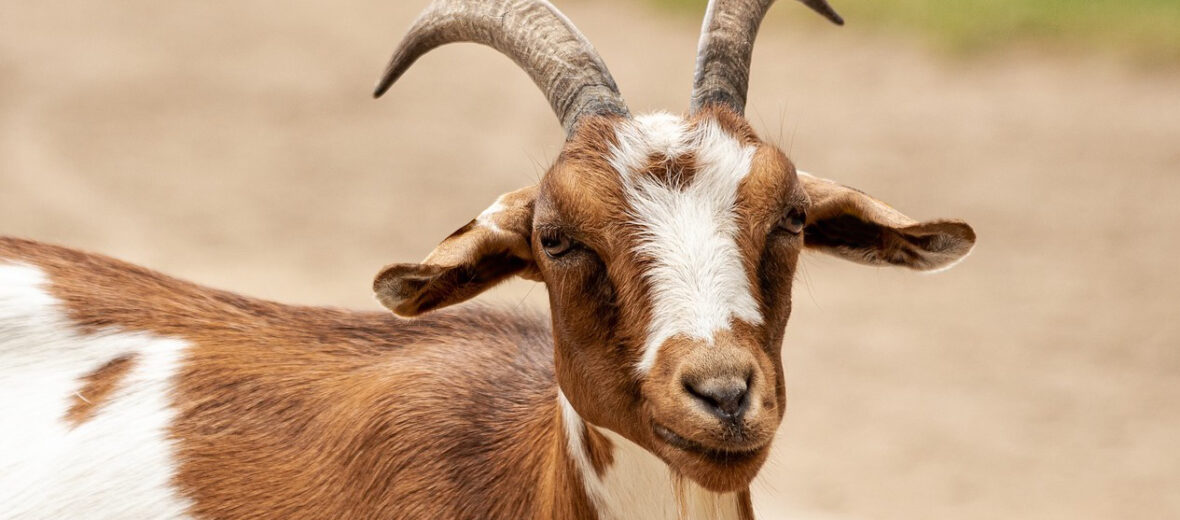
Since around 10,000 – 14,000 B.C., the goat has been a commonly kept animal. They can be found all over the world, sans Antarctica. Goats have had a long standing value as milk and meat providers. Goats were once traded and used as a type of currency. These critters still are, in certain parts of the world. They have also been linked to an individual’s wealth and status. With an estimated 450 million goats worldwide, they are commonplace animals.
First the Stats…
Scientific name: Capra aegagrus hircus
Weight: Up to 310 lbs.
Length: Up to 70 inches
Height: Up to 23 inches
Lifespan: Up to 18+ years
Now on to the Facts!
1.) Asia and the Middle East have the most goats, per capita.
2.) There are approximately 210 recognized species of goats in the world.
3.) A female goat is called a “doe” or “nanny”, a male is called a “buck” or “billy”, a baby goat is called a “kid”, and a castrated male is called a “wether” or “unlucky”.
4.) The goat was one of the first animals to be domesticated.
5.) Goats don’t have teeth on their upper jaw. Instead, they have what is called a dental pad. Their bottom jaws have up to 32 teeth.
But wait, there’s more on the goat!
6.) Male and female goats both have beards.
7.) Goats were brought over on the Mayflower.
Did you know…?
Contrary to popular belief, goats don’t eat tin cans or clothing. They also don’t eat garbage. They are actually picky eaters when provided with a nutritional diet.
8.) More people drink goat milk than any other milk.
9.) Like cows, goats have a 4 chambered stomach. This aids in the digestion of grasses and other plants.
10.) A mature, healthy buck is able to breed 20 – 40 does! Busy boy!
But wait, there’s still more on the goat!
11.) Even though they can get a bit stinky at times, goats don’t like getting baths as they aren’t to fond of water.
12.) During the breeding season, males will partake in a ritual called a rut. This is where they butt heads to establish dominance and breeding rights. They also emit a foul smelling musk. It brings the girls to the yard.
13.) Females only have 2 teats.
Did you know…?
Goats can see 320° – 340°! They have rectangular pupils which also gives them great peripheral vision. This helps them to avoid predators.
14.) When a female gives birth it is called “kidding”. So the next time someone says I’m just kidding, you can chuckle to yourself.
15.) Kids can be born with and without horns.
But wait, there’s still even more on the goat!
16.) Myotonic goats, aka fainting goats, don’t actually faint when scared or startled. Their muscles freeze up and they just fall over. Their muscles return to normal in a few seconds to a few minutes. This is the result of a genetic anomaly called congenital myotonia.
17.) Some goats are able to jump over 5 feet!
18.) Goats are so incredibly agile that they can even climb trees. Pretty impressive for having hooves and no thumbs.
19.) Have you ever owned a cashmere sweater? Thank a goat. It’s made from the downy winter undercoat of certain goats? It takes 2 goats to make just one sweater.
20.) It has been long rumored that coffee was first discovered when goat herders noticed the animals acting really hyper after consuming coffee beans.
Now a Short Goat Video!
Also, check out the Critter Science YouTube channel. Videos added frequently!
Want to suggest a critter for me to write about? Let me know here.



